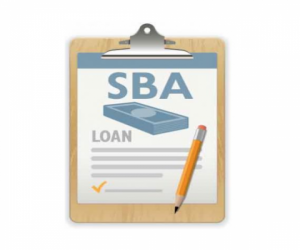- Home
- Agencies
- Department of Agriculture
- Department of Housing and Urban Development
- General Services Administration
- Department of Commerce
- Department of the Interior
- National Aeronautics and Space Administration
- Department of Defense
- Department of Justice
- National Science Foundation
- Department of Education
- Department of Labor
- Office of Personnel Management
- Department of Energy
- Department of State
- Small Business Administration
- Environmental Protection Agency
- Department of Transportation
- Social Security Administration
- Department of Health and Human Services
- Department of the Treasury
- U.S. Agency for International Development
- Department of Homeland Security
- Department of Veterans Affairs
- Goals
- Initiatives
- Programs
Electronic Disaster Assistance Loan Processing Saves Time and Money
93% percent of Disaster Assistance loans are now processed electronically.

What is the Issue?
Ensuring that small businesses return to normal operations after a disaster is essential to restoring affected local economies. To provide support after a disaster, the U.S. Small Business Administration (SBA) offers direct, low-interest loans to impacted businesses of all sizes, private non-profit organizations, homeowners, and renters. On average, the SBA approves more than 18,000 loans for a total of nearly $1 billion across 300 declared disasters each year. These loans are a critical source of economic stimulus that help protect and create jobs, stabilize tax bases, and revitalize local communities.
Prior to FY 2009, disaster survivors could only apply for loans through a cumbersome paper application. Consequently, the SBA did not receive many applications until two to three weeks after a declared disaster. In addition, loan processors manually entered application data into the Agency’s loan management system, resulting in human error and further delays. These issues prevented disaster survivors from quickly receiving their initial loan disbursement and limited the SBA’s ability to increase its assistance efforts.
What was the Intervention?
To improve the program’s responsiveness and accessibility, the SBA’s Office of Disaster Assistance began an effort to modernize its technology infrastructure. This improvement led to the development and implementation of an electronic loan application (ELA) system. ELA simplified and streamlined the application process through a user-friendly online interface, speeding delivery of Federal assistance. It improved data integrity used in the loan underwriting process, which enhanced staff productivity and saved money. These improvements have enabled SBA employees to better analyze the impact of disasters in real time and build an accurate scale up model based on approximate loan processing time standards and application volume.
How was Performance Management Useful?
Performance management served as an important tool for tracking the ELA implementation and measuring its success. Its inclusion as a strategy for achieving one of SBA’s strategic objectives and its establishment as an FY 2012-2013 and FY 2014-2015 Agency Priority Goal helped focus attention on the issue. Quarterly Deep Dives ensured accountability and transparency at the leadership level through the tracking of loan application return rates.
What was the Impact?
ELA has been described as a “game changer” at the SBA. Because disaster survivors can now apply for loans sooner and faster, they can receive their initial disbursement in days, not weeks, allowing them to stay afloat and turn their energy and attention toward rebuilding. Survivors have adopted ELA as their preferred loan application method, with more than 93% of all disaster loan applications in FY 2016 being processed electronically.




